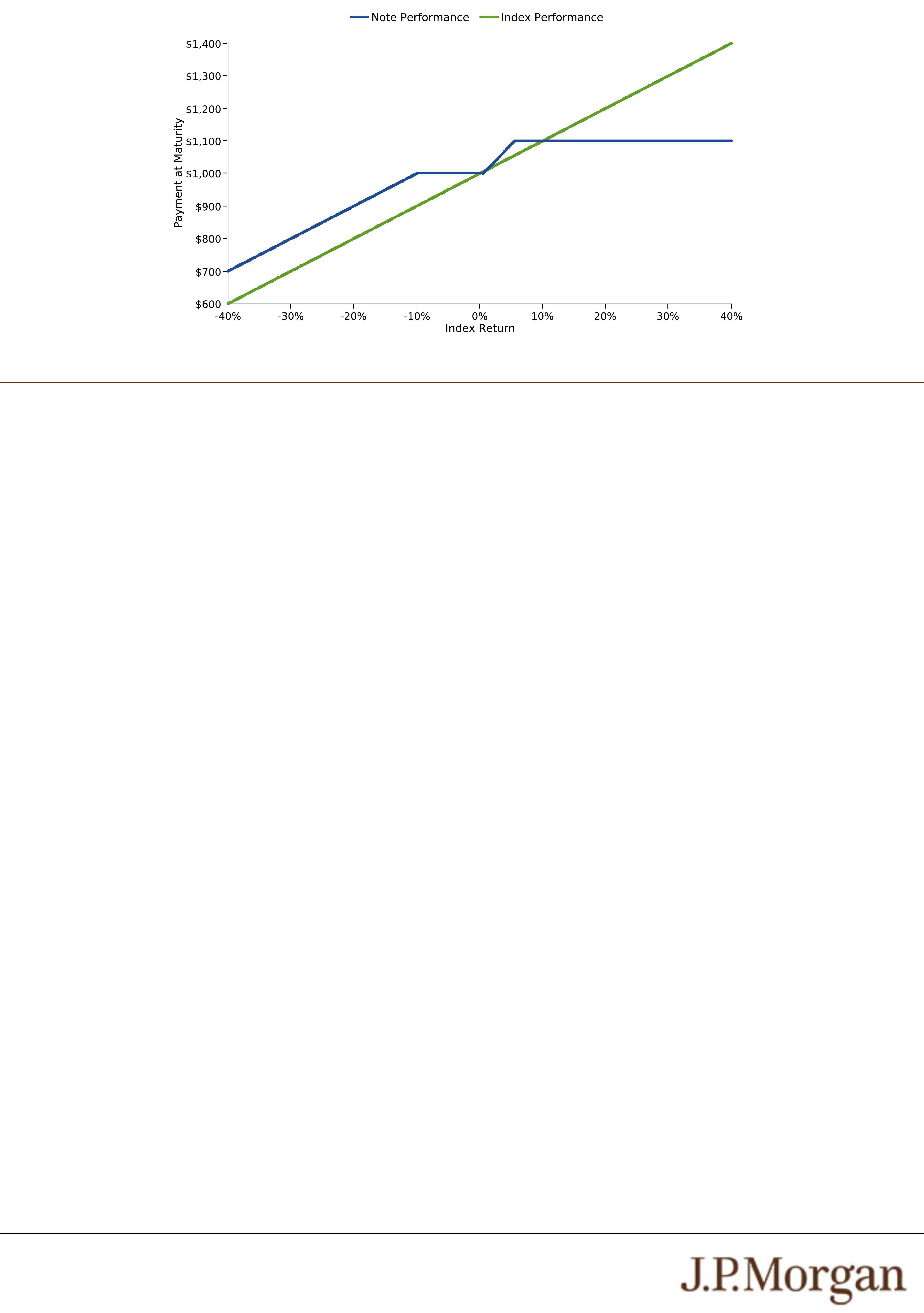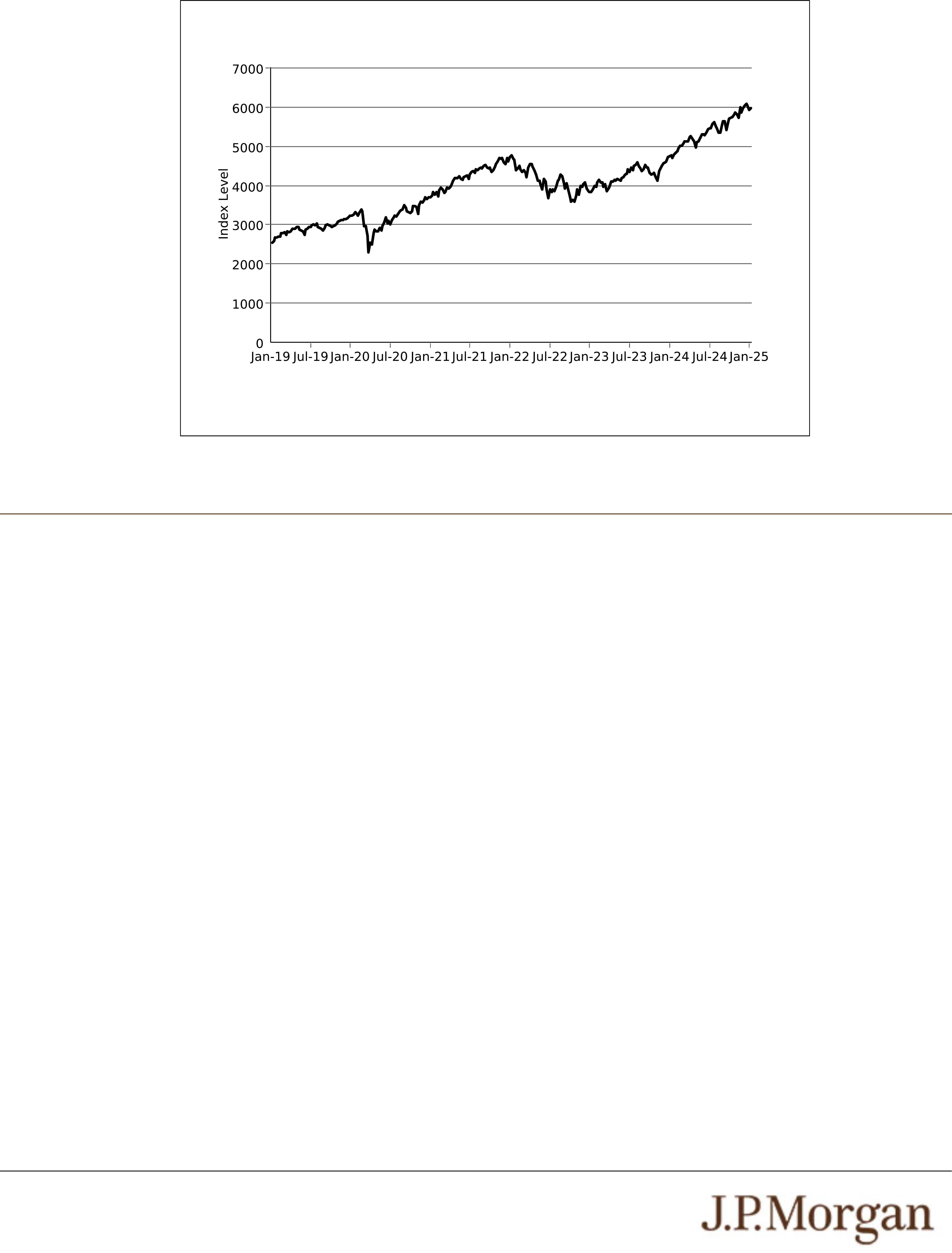
PS-7 | Structured Investments
Capped Buffered Return Enhanced Notes Linked to the S&P 500® Index
Section 871(m) of the Code and Treasury regulations promulgated thereunder (“Section 871(m)”) generally impose a 30%
withholding tax (unless an income tax treaty applies) on dividend equivalents paid or deemed paid to Non-U.S. Holders with
respect to certain financial instruments linked to U.S. equities or indices that include U.S. equities. Section 871(m) provides certain
exceptions to this withholding regime, including for instruments linked to certain broad-based indices that meet requirements
set forth in the applicable Treasury regulations. Additionally, a recent IRS notice excludes from the scope of Section 871(m)
instruments issued prior to January 1, 2027 that do not have a delta of one with respect to underlying securities that could pay U.S.-
source dividends for U.S. federal income tax purposes (each an “Underlying Security”). Based on certain determinations made
by us, we expect that Section 871(m) will not apply to the notes with regard to Non-U.S. Holders. Our determination is not binding
on the IRS, and the IRS may disagree with this determination. Section 871(m) is complex and its application may depend on your
particular circumstances, including whether you enter into other transactions with respect to an Underlying Security. If necessary,
further information regarding the potential application of Section 871(m) will be provided in the pricing supplement for the notes.
You should consult your tax adviser regarding the potential application of Section 871(m) to the notes.
The Estimated Value of the Notes
The estimated value of the notes set forth on the cover of this pricing supplement is equal to the sum of the values of the following
hypothetical components: (1) a fixed-income debt component with the same maturity as the notes, valued using the internal funding
rate described below, and (2) the derivative or derivatives underlying the economic terms of the notes. The estimated value of the
notes does not represent a minimum price at which JPMS would be willing to buy your notes in any secondary market (if any exists)
at any time. The internal funding rate used in the determination of the estimated value of the notes may differ from the market-
implied funding rate for vanilla fixed income instruments of a similar maturity issued by JPMorgan Chase & Co. or its affiliates. Any
difference may be based on, among other things, our and our affiliates’ view of the funding value of the notes as well as the higher
issuance, operational and ongoing liability management costs of the notes in comparison to those costs for the conventional fixed
income instruments of JPMorgan Chase & Co. This internal funding rate is based on certain market inputs and assumptions, which
may prove to be incorrect, and is intended to approximate the prevailing market replacement funding rate for the notes. The use
of an internal funding rate and any potential changes to that rate may have an adverse effect on the terms of the notes and any
secondary market prices of the notes. For additional information, see “Selected Risk Considerations — The Estimated Value of the
Notes Is Derived by Reference to an Internal Funding Rate” in this pricing supplement.
The value of the derivative or derivatives underlying the economic terms of the notes is derived from internal pricing models of our
affiliates. These models are dependent on inputs such as the traded market prices of comparable derivative instruments and on
various other inputs, some of which are market-observable, and which can include volatility, dividend rates, interest rates and other
factors, as well as assumptions about future market events and/or environments. Accordingly, the estimated value of the notes is
determined when the terms of the notes are set based on market conditions and other relevant factors and assumptions existing at
that time.
The estimated value of the notes does not represent future values of the notes and may differ from others’ estimates. Different
pricing models and assumptions could provide valuations for the notes that are greater than or less than the estimated value of
the notes. In addition, market conditions and other relevant factors in the future may change, and any assumptions may prove to
be incorrect. On future dates, the value of the notes could change significantly based on, among other things, changes in market
conditions, our or JPMorgan Chase & Co.’s creditworthiness, interest rate movements and other relevant factors, which may impact
the price, if any, at which JPMS would be willing to buy notes from you in secondary market transactions.
The estimated value of the notes will be lower than the original issue price of the notes because costs associated with selling,
structuring and hedging the notes are included in the original issue price of the notes. These costs include the selling commissions
paid to JPMS and other affiliated or unaffiliated dealers, the projected profits, if any, that our affiliates expect to realize for assuming
risks inherent in hedging our obligations under the notes and the estimated cost of hedging our obligations under the notes.
Because hedging our obligations entails risk and may be influenced by market forces beyond our control, this hedging may result
in a profit that is more or less than expected, or it may result in a loss. A portion of the profits, if any, realized in hedging our
obligations under the notes may be allowed to other affiliated or unaffiliated dealers, and we or one or more of our affiliates will
retain any remaining hedging profits. See “Selected Risk Considerations — The Estimated Value of the Notes Will Be Lower Than
the Original Issue Price (Price to Public) of the Notes” in this pricing supplement.








